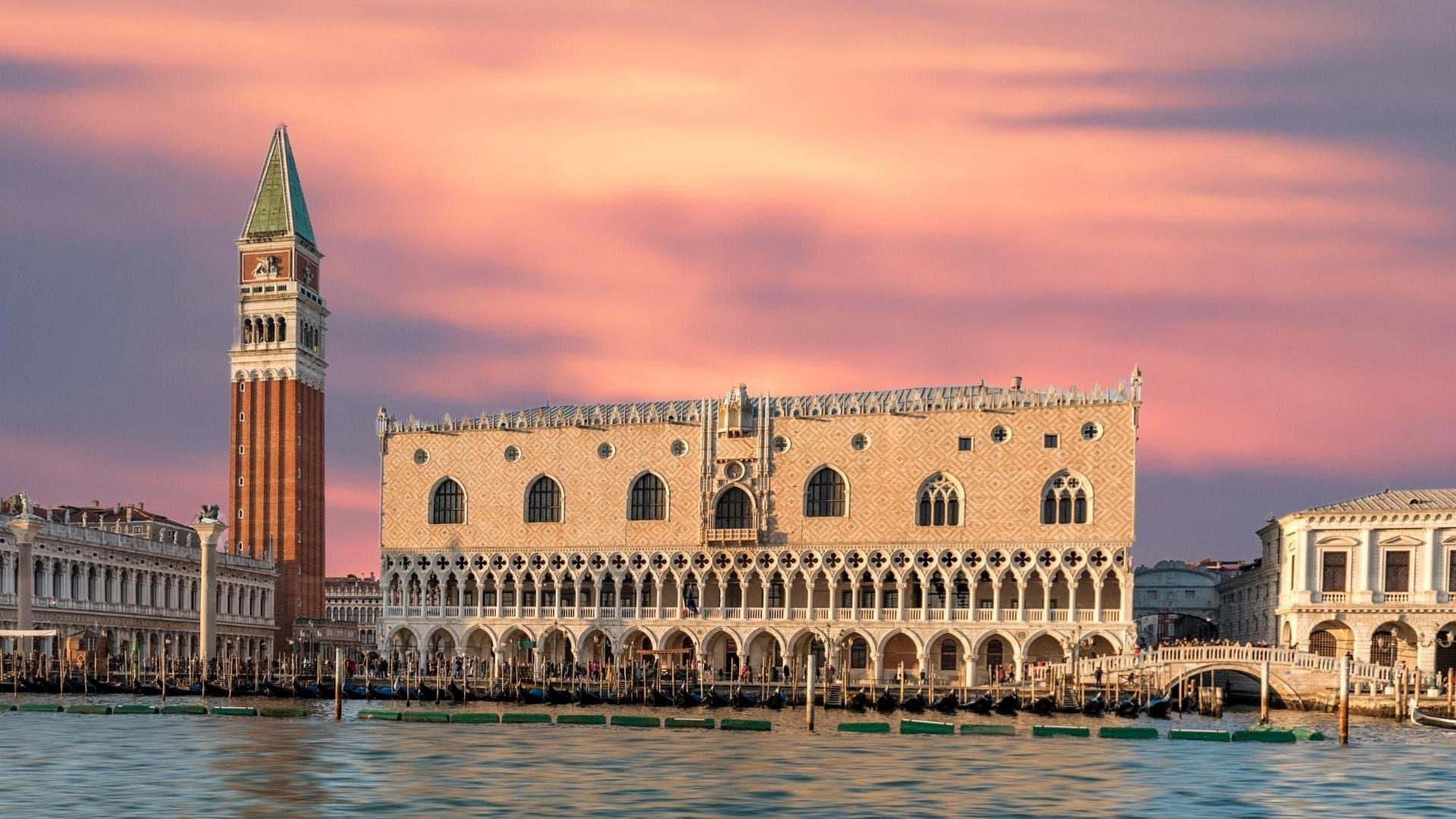Dramas, passions, murders and impossible loves: the ingredients of Italian opera come alive in the places that inspired their legendary authors. Some you might not expect.
In our list, you will read about famous spots and others almost unknown. You'll discover secrets, curiosities and forgotten stories. Plus, lots of ideas for planning seven alternative itineraries to the rhythm of the world's most popular arias. And no longer get all tongue-tied when it comes to Tosca & co.

7. Milan, the opera beyond La Scala

The first stop on this journey through the most symbolic opera spots in Italy is Milan, one of the world capitals of the genre. The international metropolis, always buzzing, cultured and creative, is perfect for thematic itineraries.
The common thread we have chosen for this report is its fascinating musical history, and the corners where Milan's great operatic tradition is echoed are no less than its reputation. Places like Palazzo Reale, where the first performances were held: first at Salone Margherita and later at the Teatro Regio Ducale, respectively destroyed by fire in 1708 and 1776.
Move on to Galleria Vittorio Emanuele II, close your eyes for a moment and try to imagine this undisputed temple of glamour as it used to be in the 19th century, crowded with composers, musicians and singers. Not far away is the Teatro dei Filodrammatici, where Giuseppe Verdi took his first steps. And the Teatro alla Scala, one of the most prestigious theatres worldwide.
Take a walk along Via Alessandro Manzoni. It is said that the Milanesi covered it with straw so that the squeaking of the carriages would not disturb the rest of Verdi, seriously ill. In a few minutes, you will be at the Grand Hotel de Milan, the house chosen by the maestro native of Busseto for his stays in town. At the desk in suite number 105, he wrote some of his most famous works.
Get your tickets for a guided tour of the Teatro alla Scala6. On the set of Pagliacci, Leoncavallo's masterpiece
One of the most famous Italian operas is set in Montalto Uffugo, Calabria. The most famous aria, Vesti la giubba, the "clown song", is as unforgettable as Pavarotti's masterly performance, still in the audience's heart.
A murder occurred when Ruggero Leoncavallo, the renowned Neapolitan composer, was only a child inspired Pagliacci. The opera recounts a tale of passion and jealousy culminating in a killing on stage. At the end of the second act, Canio, the head of a theatre company, stabs his wife and lover to death.
The actual events that Leoncavallo witnessed as a young boy took place near the church of San Domenico, a 15th-century building featuring a fine Baroque facade.
The town is a 40-minute drive from Cosenza. In addition to the Neapolitan composer, St Francis of Paola is the other figure Montalto Uffugo has linked its name to. The church dedicated contains one of the oldest pictorial representations of the Calabria saint. Also, the paths leading to the sanctuary of Paola start from here.
The historic centre mixes ancient buildings with an intriguing past, with even a 15th-century Jewish workshop. The principal place of worship is the Church of the Madonna della Serra, accessed by the majestic steps of Nicolò Ricciulli, a pupil of Vanvitelli who took part in the construction of the Royal Palace of Caserta.
5. Mantua: art and ghosts in the town of Rigoletto

16th-century Mantua is the backdrop for Rigoletto, Giuseppe Verdi's 1851 opera inspired by Victor Hugo's play Le roi s'amuse. The story of Rigoletto, a jester at the court of the Duke of Mantua (by the way, the duke's name is never mentioned in the opera), and his unfortunate daughter Gilda begins in the Palazzo Ducale.
The lords of Mantua's residence is a magnificent structure encompassing a complex of buildings dating from the 13th to 18th century. With a 35,000-square-metre surface area and almost 1,000 rooms, it is easy to guess why it is called a "palace city". Gothic frescoes by Pisanello, Mantegna's Camera Picta, and some Baroque works by Rubens enrich the interiors.
Ghosts haunt the Palazzo Ducale in Mantua, or so it is said. A plaque in Piazza Pallone remembers the most famous legend about Agnese Visconti, the unfortunate young wife of Francesco I Gonzaga, condemned to death with her alleged lover. This sinister tale imbues the Ducal Palace with a mysterious charm, with those who swear to have heard desperate cries and others who have seen strange lights appear in the castle.
In Piazza Sordello, a short distance from the palace, you will find the Renaissance mansion that inspired the setting for Rigoletto's house. There is also a bronze statue dedicated to the jester in the inner courtyard.
Other places that recall Verdi's opera are the San Leonardo district and the Rocchetta di Sparafucile, the inn introduced in Act III.
4. Giacomo Puccini: a tour through his hometown

La Boheme, Tosca and Madama Butterfly are among Giacomo Puccini's most celebrated operas, performed in theatres worldwide. Heir to a family of musicians, the composer's rise began in Lucca. A tour of the lovely Tuscan city will inevitably take you to places dear to Turandot's author.
Puccini's birthplace is now a museum located in Corte San Lorenzo, a few steps from Piazza San Michele. The 19th-century furniture is still preserved, together with documents and memorabilia that trace his life. The building overlooks Piazza Cittadella, the square with a bronze statue dedicated to the maestro. A short walk will take you to the church of Santi Paolino e Donato, the Puccini family parish, where Giacomo made his debut as a composer.
Sightseeing must include the Teatro del Giglio, the stage of many Puccini's operas, and the baptistery of Saints Giovanni and Reparata, where he was baptised. Also, visit the Cathedral of San Martino: the Puccini family's members alternated as organists for 124 years. As a boy, Giacomo studied at the Boccherini Institute in Piazza del Suffragio, a music school that houses a precious collection of memoirs.
Other spots you should see are the church of San Pietro Somaldi, featuring a precious 17th-century organ that Puccini committed to restoring, and the Alfredo Caselli's café. This brilliant grocer created a meeting place for extraordinary artists, from Pascoli to Mascagni. Lucca speaks of Puccini in many, many corners of the city. You just have to discover them all.
3. Vizzini, the true theatre of Cavalleria Rusticana

Pietro Mascagni's Cavalleria Rusticana is a acclaimed opera inspired by Giovanni Verga's novel. Like its literary counterpart, the location is Vizzini, the village near Catania, Sicily, that provides the backdrop for the love triangle told in the story.
If you want to relive the same suggestions evoked in Cavalleria Rusticana, then the place to visit is Cunziria. Today it looks like a small ghost town, but it used to be a craft district during the last century. Turiddu and Alfio, the main characters, duel here in the opera's final scene.
Verga had a special bond with Vizzini, as his father came from this town, one of the oldest on the island. He set many of his books and novels here. Wandering around the historic centre, you will see a strong connection with the great writer who best described noble and rural 19th-century Sicily.
Palaces, alleyways, squares and churches, each with a story to tell, make Vizzini a true literary park. In Piazza Umberto, you will find Palazzo Verga, the writer's home, the Palazzo Municipale (Town Hall) and the Salita Marineo. The latter is a stairway covered with fine majolica tiles and recalls Caltagirone's world-famous steps.
The Church of San Gregorio is a marvellous mixture of styles featuring a stunning Gothic-Catalan portal that survived the Val di Noto earthquake of 1693. All you have to do is spend a day in Vizzini exploring this town that seems straight out of a book.
2. A trip to Rome following in the footsteps of Tosca

Giacomo Puccini set his Tosca, one of his best-loved operas, in 19th-century Rome. The locations you shouldn't miss to relive the passionate drama inspired by Victorien Sardou's play are the capital's architectural masterpieces.
First of all, Castel Sant'Angelo, the prison Angelotti — one of the main characters in the play — escapes from and where the dramatic finale takes place. A mausoleum, papal seat, noble residence, court, barracks: in about nineteen centuries of history Castel Sant'Angelo has been many things, including a prison for political prisoners.
Continue towards the Sant'Eustachio district to the Basilica di Sant'Andrea della Valle, where the female protagonist, Flora Tosca, enters the scene. Giacomo Della Porta, Francesco Grimaldi, and Carlo Maderno built the Baroque structure in 1650. Its imposing 80-metre-high dome is second only to St Peter's in the Vatican and the Church of Saints Peter and Paul in EUR.
The second act of Puccini's Tosca turns to the Palazzo Farnese, now home to the French embassy. The 16th-century residence commissioned by Pope Paul III has a grandiose frescoed gallery inside. If you plan to visit, remember to book well in advance.
Get your tickets for Castel Sant'Angelo1. Among calli and gondolas to the sound of music

Opera in Venice rhymes with La Fenice theatre, home to great debuts from Rossini and Bellini to Donizetti and Verdi. But La Serenissima is full of spots that resonate with the notes of the greatest composers of all time. When in the city, you will find organised tours to discover Venice as the capital of opera and music in general. But if you prefer a do-it-yourself approach, here are a few ideas.
Near Piazza San Marco, there is the Venetian residence of Claudio Monteverdi, the inventor of Italian opera. Then, a ten-minute walk will take you to Contrada Castello to visit San Giovanni in Bragora, the church where Antonio Vivaldi was baptised. Wandering through the calli (the characteristic streets of Venice) reach the Chiesa della Pietà with its ancient ospedale, where Vivaldi used to be a teacher for some forty years.
Ospedali in Venice were institutions that welcomed people in need and orphans. Girls, in particular, were initiated into the art of music and took part in outstanding orchestras. Also, the adjoining churches were structured in order to have adequate acoustics for concerts. In addition to the Chiesa della Pietà, the Chiesa dei Derelitti dell'Ospedaletto and the church of the Ospedale dei Mendicanti are all exemples of how music impacted on architecture.
Indeed, music has always been of crucial importance in Venice. Theatres and concert halls proliferated, especially in the 18th and 19th centuries, and many composers chose it as their home. Wagner was so enchanted he drew inspiration for Tristan and Isolde while staying at Palazzo Giustinian. It is bound to win you over too.
About the author
Written on 17/01/2022




Lorena Calise
A trip to Italy to the rhythm of music? Well, yes. But we also have lots of interesting facts to help you impress your friends.